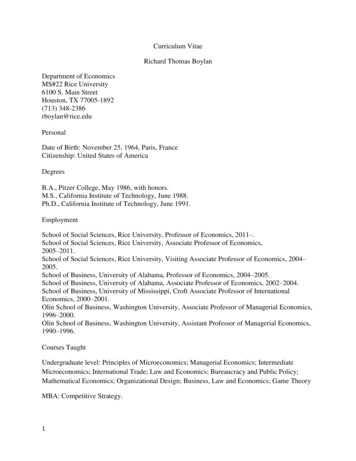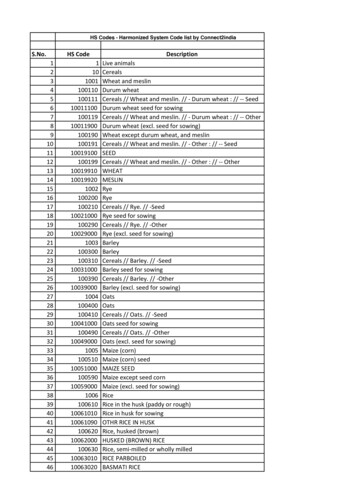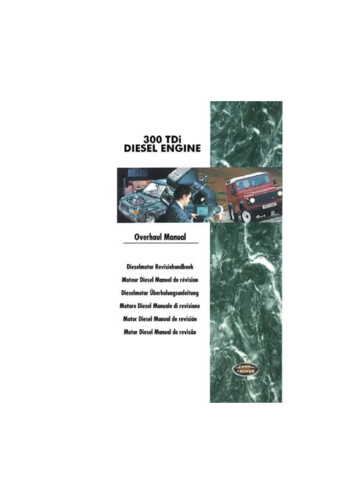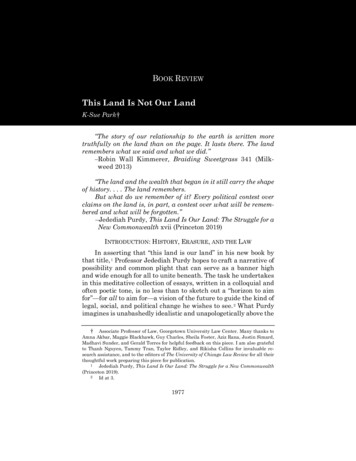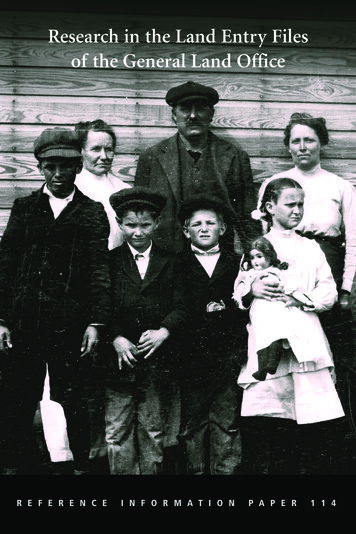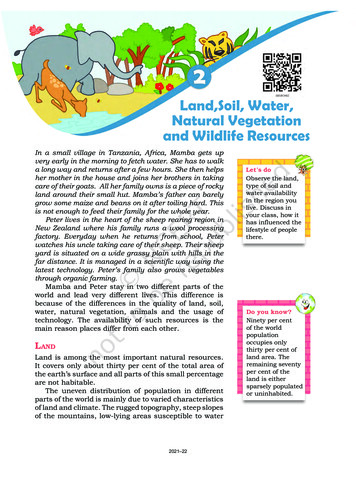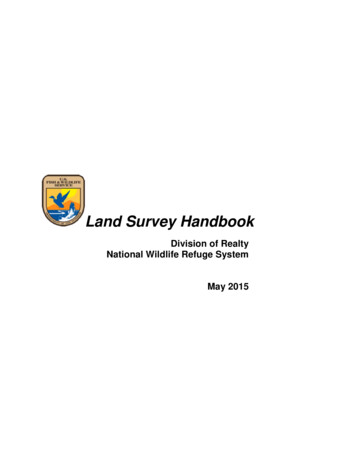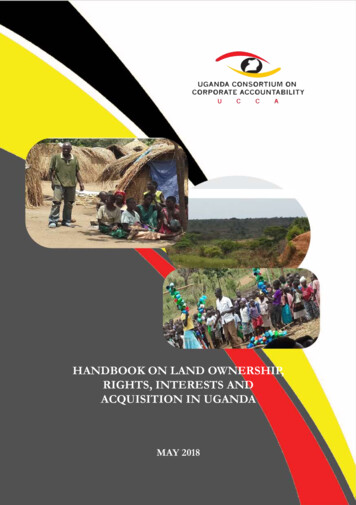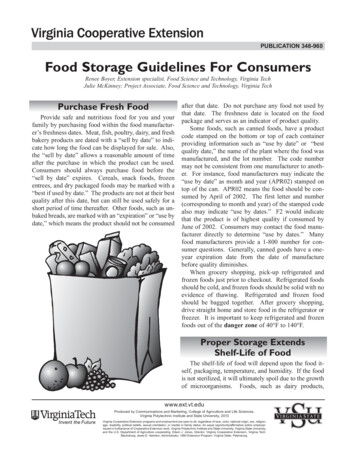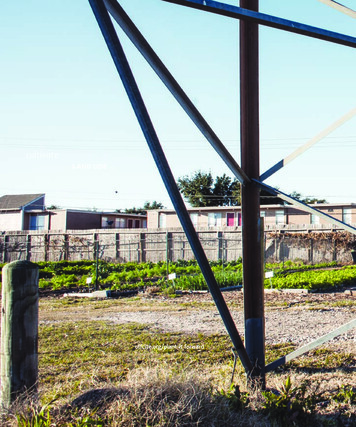
Transcription
cultivateland useoffcite.org/plant it forward32spring
spring33
01In the closed position, AlfredHitchcock’s Beer Window isunobtrusive and anticipatory.The relative privacy of thestatus quo remains un-challenged.02When the mood strikes, a neighbor oneither side of the fence can switch onthe iconic ‘beer light.’ The friendly,illuminated vessel announces the desireof a ritualistic drink, and calls theneighbor on the opposite side of thefence to participate.03When the moment is right, neighbors onboth sides of the fence can swing thehinged Beer Window open!04The privacy screen becomes a shadingdevice, sheltering social imbibers fromHappy Hour’s intense afternoon rays. Thetap literally straddles the property line,offering draught beer to be shared. If iceis used to chill the keg, melting water willirrigate the backyard garden.I feel all bubbly inside!by joseph altshuler34springhouston’s urban fabric is frequently characterized by the prevalence of hierarchical road systems—expressways that lead to feeder roads thatlead to boulevards that eventually terminate incul-de-sac destinations. This street infrastructureimplies a pattern of territorial isolation whereproperties accessed by cul-de-sacs are insular,introverted, and closed off from serendipitousconnections with the city. Albert Pope argues thatsuch infrastructural form produces “individuated subjects at the expense of any massification orincorporation.”1 However, roadway organizationis not the only infrastructural form that regulateshow subjects are produced and how people interact in a city. Perhaps the fence is an even more potent instrument of organizational power and aneven more visible manifestation of the “cul-desac city.” In Houston, high fences, gated housingcomplexes, and limited access properties abound.In his 1996 book Between Fences, GregoryK. Dreicer, writes, “We live between fences. Theybound our properties and stand at the centerof the American landscape. Fences define, pro-tect, confine, and liberate. They tell us wherewe belong and who we are in relation to others.Fences join the public and private. Remove a fence;invite chaos. Erect a fence; you are home.”2 Public is communal, exposed, and inclusive; public isyou—for all to see. Private is isolated, concealed,and intimate; private is me—for no one to see.Can we view the fence, the object that joins publicto private, as not simply a solid wall, but insteadas a wall that has been carefully punctuated withdoors and windows? Can there be elements of“massification” and “incorporation” in a worldthat still supports an “individuated subject?”The old adage says, “good fences make goodneighbors.” Robert Frost mused on this proverbin his 1914 poem, “Mending Wall,” in which hedescribes two neighbors on either side of a fence,mending the fallen stones during an annualspringtime routine. The narrator of the poem isskeptical of this act of border reinforcement, andhe questions his neighbor accusingly, “Why dothey make good neighbors? Isn’t it / Where thereare cows? But here there are no cows.” Their fenceall drawings by joseph altshuler.On the Fence
01In the closed position, the Lazy SusanPicnic Table remains a functional bench.The surface of the Lazy Susan tray itselfdoubles as a chalk board, and acts as aplayful, rotating art surface whilebeing stored on a peg at kid-level.02When the moment is right, neighbors onboth sides of the fence can swing thehinged table surface open!03The Lazy Susan tray is mobilized intoposition by simply placing it on its centralaxle. Neighbors can inscribe menu notesand food labels on its chalkboard surface(“100% Vegan cookies!”). By rotating theLazy Susan, food-sharing can literally straddleproperty lines and neighborhood boundaries.04An optional umbrella can be installed totemper summer’s hottest afternoons andspringtime’s evening drizzles.Let’s table it.Great fences make great neighbors.*Booster Seat not included.merely separates apple trees from pine trees. Whatwould happen if a fallen apple were intentionallyexchanged for a pinecone?The fundamental act of architecture is todelineate borders—to mark territory by locating thresholds. “On The Fence” is a proposal forstrategic property line interventions betweenprototypical backyard borders. The project inserts public apertures into the demarcations ofprivate property. Literally implanting playfulopportunities into the surface of the fence itselfcreates radical adjacencies and social opportunities. The border is re-delineated.A lexicon of backyard leisure activitiesprograms this new middle ground. By leveragingthe familiar vocabulary of backyard recreation,new participants are invited to join in existingactivities.The architecture of “On The Fence” exploitsthe latent potential of two-sided adjacency tocreate and combine new collectives of neighborsand citizens. The project respects the discretedomestic differences that fences protect, but itchallenges people on either side to interact in newways. It posits that even in the private haven of afenced-in yard, there can be a place for encountering the Other—people different from ourselves.Moreover, by privileging humorous possibilities,the project looks to ease the inherent tension andawkwardness that comes along with interactingwith new people.Great fences make great neighbors.notes12See Albert Pope’s analysis of the “cul-de-sac city”in “Terminal Distribution,” Architectural Design, vol. 78,no. 1 (January-February 2008), 16-21.Gregory K. Dreicer, Between Fences (New York:Princeton Architectural Press, 1996), 8.spring35
offcite.org/suburban mutations36spring
unexpectedurban lifespring37
In his 1996 book Between Fences , Gregory K. Dreicer, writes, ÒWe live between fences. They bound our properties and stand at the center of the American landscape. Fences deÞne, pro - tect, conÞne, and liberate. They tell us where we belong and who we are in relation to others. Fences join the public and private. Remove a fence;
